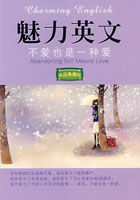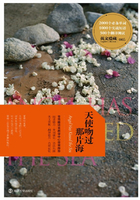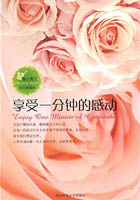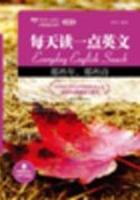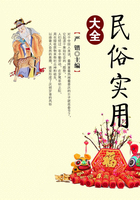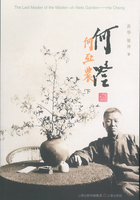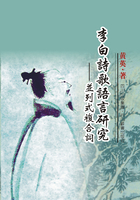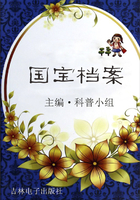我们能听见农夫劈砍柴火的声音,大地冰封,不时有鸡鸣狗叫的声音传出。寒冷的空气,只能把那些尖锐的声音传入我们的耳朵,那些声音听起来短促悦耳。凡是清醇轻盈的液体,稍有波动也会很快停止,因为里面的晶体硬块,很快沉到底下去了。声音从地平线的远处传来,像钟声一样清晰响亮,冬天的空气清新,不像夏天那样混合着许多杂质,因而声音听来也不像夏天那样刺耳模糊。走在冰封的土地上,声音犹如敲击坚硬的木块那样洪亮,甚至是乡村里最平凡的声响,都听起来美妙动听,树上的冰条,互相撞击,听起来像铃声一样悦耳,乐在其中。
空气里几乎没有水分,水蒸气不是干化,就是凝固成霜了。空气十分稀薄而且似乎带弹性,人呼吸进去,顿感心旷神怡。天空似乎被绷紧了,往后移动,从下向上望,感觉像置身于大教堂中,头上是一块块连在一起的弧形的屋顶,空气被过滤得纯粹明净,好像有冰晶沉浮在中间,正如格陵兰的居民告诉我们的,当那里结冰的时候,“海就冒烟,像大火爆发的威力,而且伴有雾气升腾,称为烟雾,这烟雾能让人的手和脸起疱肿胀,并对人体有害。”但是我们这里的空气,虽然冰寒刺骨,但是质地清醇,可以滋养心肺,提神醒脑。我们不会把它当做冻霜,而会把它看做仲夏雾气的结晶,经过严寒的凝结,变得更加清醇了。
大自然在冬天是一架旧橱柜,各种干枯了的标本按照它们生长的次序,摆得井然有序。草原和树林成了一座“植物标本馆”。树叶和野草保持着完美的形态,在空气的压力下,不需要用螺丝钉或胶水来固定。巢不用挂在假树上,虽然树已经枯萎了,可那毕竟是真树,鸟儿在哪里建的,还保留在哪里。
……
就在我们四处游荡的这会儿,天空又有阴云密布,雪花纷然而落。雪越下越大,远处的景物渐渐地脱离了我们的视线。雪花光顾了每一棵树和田野,无孔不入,痕迹遍布河边、湖畔、小山和低谷。四足动物都躲藏起来了,小鸟在这平和的时刻里也休息了,在这平和的气候里周围几乎听不到任何声音,可是,渐渐地,山坡、灰墙和篱笆、光亮的冰还有枯叶,所有原来没有被白雪覆盖的,现在都被埋住了,人和野兽的足迹也消失了。大自然轻而易举地就实施了它的法规,把人类行为的痕迹抹擦得干干净净。听听荷马的诗:“冬天里,雪花降落,又多又快。风停了,雪下个不停,覆盖了山顶和丘陵,覆盖了长着酸枣树的平原和耕地。在波澜壮阔的海湾海岸边,雪也纷纷地下着,只是雪花落到海里,就被海水悄无声息地融化了。”白雪充塞了所有的事物,使万物平等,把它们深深地裹在自然的怀抱里,就像漫漫夏季里的植被,爬上庙宇的柱顶,爬上堡垒的角楼,覆盖人类的艺术品。
心灵小语
憧憬需要春天,激情需要夏天,收获需要秋天,而冷静地思考,冬天再适合不过了。寒冷和白雪都是冬天的恩赐,在茫茫的宇宙中,思想穿透一切,一路前行。
记忆填空
1. The recent tracks of the fox or otter, in the yard, remind__ that each hour__ the night is crowded with events, and the primeval nature is still working and making tracks in the__ .
2. In__ , nature is a cabinet of curiosities, full of dried specimens, in their natural order and__ .
3. With so little effort does__ reassert her rule and blot out the trace of__ .
佳句翻译
1. 树木和灌木向四面八方伸展着它们白色的枝干。
译__________________
2. 仿佛一夜的工夫,大自然就重新设计了一幅田野美景,供人类的艺术家来临摹。
译__________________
3. 东方露出一点耀眼的古铜色光彩,预示着天就要亮了。
译__________________
短语应用
1. Faster and faster they fall, shutting out the distant objects from sight.
shut out:关在外面;排除;遮住
造__________________
2. ...the turrets of the castle, and helps her to prevail over art.
prevail over:胜过;占优势
造__________________
醇美九月
Sweet September
哈尔·勃兰德 / Hal Borland
哈尔·勃兰德,美国著名作家,他最让人熟知的就是“No winter lasts forever; no spring skips its turn.”
September is more than a month, really; it is a season, an achievement in itself. It begins with August’s leftovers and it ends with October’s preparations, but along the way it achieves special satisfactions. After summer’s heat and haste, the year consolidates itself. Deliberate September—in its own time and tempo—begins to sum up another summer.
With September comes a sense of autumn. It creeps in one misty dawn and vanishes in the hot afternoon. It tiptoes through the treetops. rouging a few leaves, then rides a tuft of thistle down across the valley and away. It sits on a hill top and hoots like an October owl in the dusk. It plays tag with the wind. September is a changeling, busy as a squirrel in a hickory tree, idle as a languid brook. It is summer’s ripen and richness fulfilled.
Some of the rarest days of the year come in the September season—days when it is comfortably cool but pulsing with life, when the sky is clear and clean, the air crisp, the wind free of dust. Meadows still smell of hay and the sweetness of cut grass. September flowers are less varied than those of May but so abundant that they make September another flowery month. Goldenrod comes by mid-August, but rises to a peak of golden abundance in early September. Late thistles make spectacular purple accents. And asters blossom everywhere, along the roadsides, in meadows, on the hilltops, even in city lots, ranging in color from pure white through all degrees of lavender to the royal New England purple.
We think of spring as the miracle time, when opening bud and new leaf proclaim the persistence of life. But September is when the abiding wonder makes itself known in a subtler way. Now growth comes to annual fruition, and preparations are completed for another year, another generation. The acorn ripens and the hickory nut matures. The plant commits its future to the seed and the root. The insect stows tomorrow in the egg and the pupa. The surge is almost over and life begins to relax.
The green prime is passing. The trees begin to proclaim the change. Soon the leaves will be discarded, the grass will sere. But the miracle of life persists, the mysterious germ of growth and renewal that is the seed itself.
This is gossamer season. Dawn shimmers with spider filaments, proof that late hatches of spiderlings have the instinct to travel. On such gossamer strands tiny spiders have traveled into the Arctic and almost to the summits of the Himalayas. Soon milkweed pods will open with their silver floss.
This is the season of the harvest moon. With reasonably clear skies it will be a moonlit week, for the harvest moon is not hasty; it comes early and stays late. There was a time when the busy farmer could return to the fields after supper and continue his harvest by moonlight. There’s still harvesting to be done, but much of it now centers on the kitchen rather than the barns. The last bountiful yield comes from the garden, the late sweet corn, the tomatoes, the root vegetables. The canning, the preserving, the freezing, the kitchen harvest in all its variety, reaches its peak.
First frost comes in the night, a clear, scant-starred night when the moon is near its fullness. It comes without a whisper, quiet as thistle down, brushing the corner of a hillside garden. Dawn comes and you see its path—the glistening leaf, the gleaming stem, the limp, blackening garden vine.
Another night or two the frost walks the valleys in the moonlight. Then it goes back beyond the northern hills to wait a little longer, and the golden mildness of early autumn comforts the land. A faint anise smell is on the air, goldenrod scent. The mist swirls and September shines through, the deep-blue sky of September.

